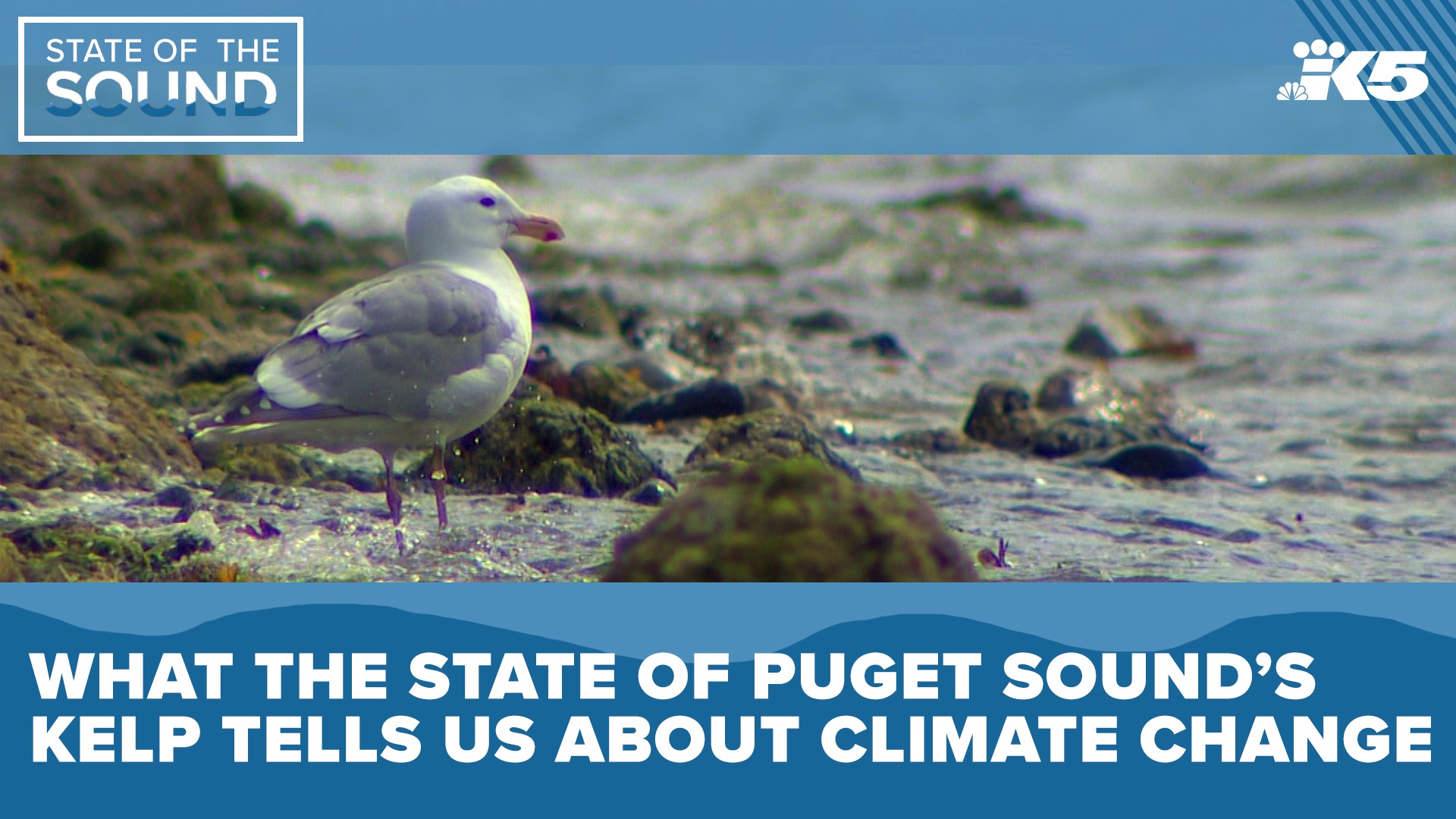CAMANO ISLAND, Wash. — It is one thing to study the forests on land, but it's an entirely different thing to study the "forests" of the sea.
"When we think about forests, most of us are thinking about terrestrial forests, right? But these are underwater forests that are doing incredible work in terms of absorbing carbon dioxide, turning it into food, that supports us," said Betsy Peabody, executive director of Puget Sound Restoration Fund (PSRF), a group dedicated to researching and preserving the marine life of its namesake.
The PSRF, with support from the Paul G. Allen Family Foundation, is launching a kelp monitoring initiative that is taking a unique approach to their research.
While much research has been done on the surface level, Peabody said their "Eyes on Kelp" monitoring program will go beneath the surface.
“We're going to be doing underwater ecological monitoring with divers," Peabody said.
The PSRF is launching the project as bull kelp populations in parts of Puget Sound have seen significant declines.
For example, the south Sound has seen an 80% loss in bull kelp forests in the last 50 years, according to the fund. In the central Sound, where Seattle is located, there are places where kelp forests have disappeared entirely, like around Bainbridge Island.
“Clearly, there's a connection between places where kelp forests can thrive and places where maybe the temperature is too warm,” Peabody explained.
With the support of the Paul G. Allen Family Foundation, the PSRF started the new project to try to figure out why some kelp beds thrive, while others decline.
The kelp monitoring program will expand to 14 stations throughout the Sound from the Strait of Juan de Fuca to Squaxin Island, near Olympia.
To obtain trained divers to help glean the data from kelp beds, PSRF partnered with the Reef Check Foundation to train recreational divers to be underwater scientists.
"I'm just a recreational diver who loves the underwater world," said Brad Giles. "The underwater world is so beautiful here. You know we're so fortunate in Washington that we have just this beautiful landscape.”
Giles is a diving enthusiast and owns a dive shop in Marysville. He heard about the kelp monitoring project through the Reef Check Foundation and signed up.
"I felt this is an opportunity that I can get out here and give back to the diving community and to the community in general," Giles said.
Giles and about a dozen other volunteers, who are already trained divers, set out from a beach at Camano Island State Park and went into the water, where they took images and data from nearby kelp beds.
"This is a way to get them involved in monitoring those kelp forests in a systematic way, using the same protocols that our scientific divers use," Peabody said.
The kelp monitoring program includes a robotic monitoring component led by The Bay Foundation and Marauder Robotics.

